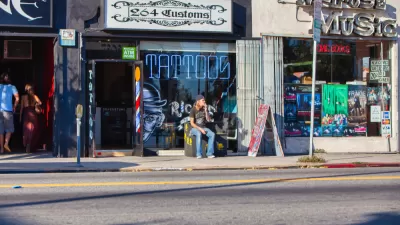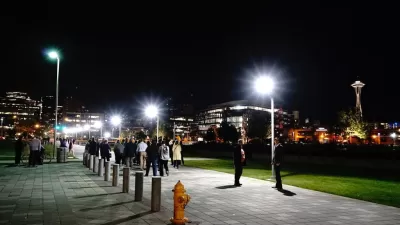An article on big think examines a project to find the unique qualities of urban street grids as an exercise in the potential of Big Data.
Frank Jacobs writes about the project of two French researchers working to develop a mathematical of the unique "fingerprint" of cities. The research of Rémi Louf and Marc Barthelemy examined the street grids of 131 cities around the world for their paper "A Typology of Street Types," finding that they could, in fact, describe street grids as distinct types.
Here is the core of the project's methodology, as described by Jacobs:
If one considers street grids as networks, with intersections as the nodes and street segments as the links between them, it becomes clear that classification should not just rely on proximity (i.e. the spatial distribution of betweenness), but also on geometry (i.e. the spatial distribution of the nodes). The researchers extracted information on city blocks (easier to define than streets) from 131 maps of cities on all inhabited continents, and defined these by area (A) and shape (Φ). The value of Φ is always smaller than one, and the smaller it is, the more anisotropic it is. Meaning that its properties differ according to the direction of measurement.
The article includes several compelling data visualizations as well as some discussion of the taxonomy that emerges from the analysis: according to the researchers, cities fall into four groups, exemplified by Buenos Aires, Athens. New Orleans, and Mogadishu. The third group, exemplified by New Orleans, dominates North America (every city but Vancouver) and Europe (every city but Athens).
FULL STORY: How to Fingerprint a City

Planetizen Federal Action Tracker
A weekly monitor of how Trump’s orders and actions are impacting planners and planning in America.

Map: Where Senate Republicans Want to Sell Your Public Lands
For public land advocates, the Senate Republicans’ proposal to sell millions of acres of public land in the West is “the biggest fight of their careers.”

Restaurant Patios Were a Pandemic Win — Why Were They so Hard to Keep?
Social distancing requirements and changes in travel patterns prompted cities to pilot new uses for street and sidewalk space. Then it got complicated.

Platform Pilsner: Vancouver Transit Agency Releases... a Beer?
TransLink will receive a portion of every sale of the four-pack.

Toronto Weighs Cheaper Transit, Parking Hikes for Major Events
Special event rates would take effect during large festivals, sports games and concerts to ‘discourage driving, manage congestion and free up space for transit.”

Berlin to Consider Car-Free Zone Larger Than Manhattan
The area bound by the 22-mile Ringbahn would still allow 12 uses of a private automobile per year per person, and several other exemptions.
Urban Design for Planners 1: Software Tools
This six-course series explores essential urban design concepts using open source software and equips planners with the tools they need to participate fully in the urban design process.
Planning for Universal Design
Learn the tools for implementing Universal Design in planning regulations.
Heyer Gruel & Associates PA
JM Goldson LLC
Custer County Colorado
City of Camden Redevelopment Agency
City of Astoria
Transportation Research & Education Center (TREC) at Portland State University
Camden Redevelopment Agency
City of Claremont
Municipality of Princeton (NJ)





























